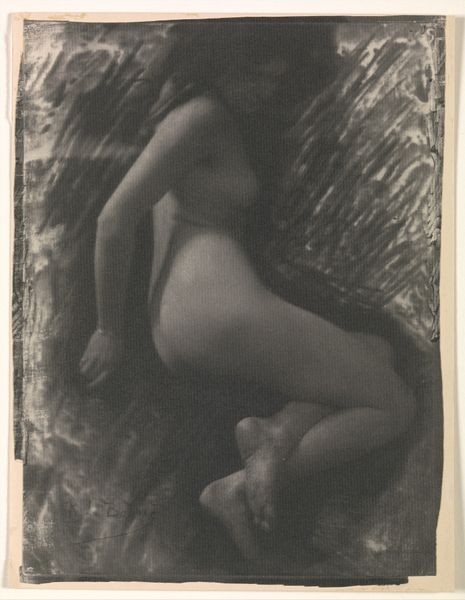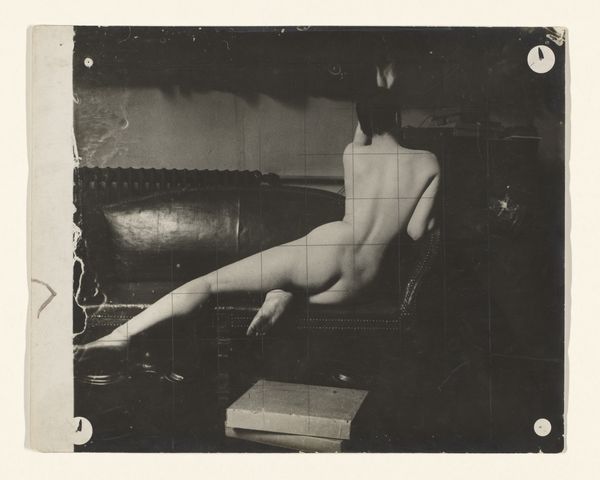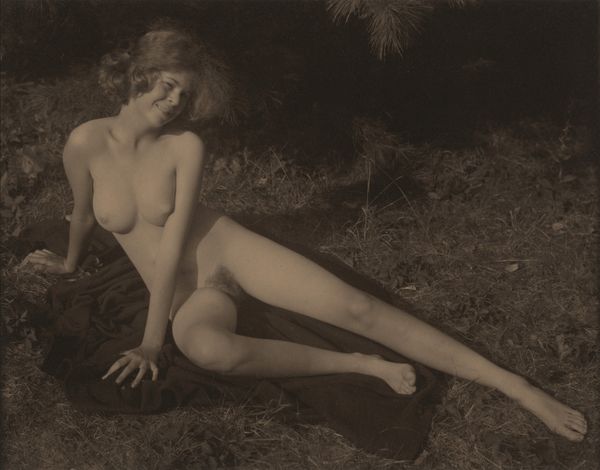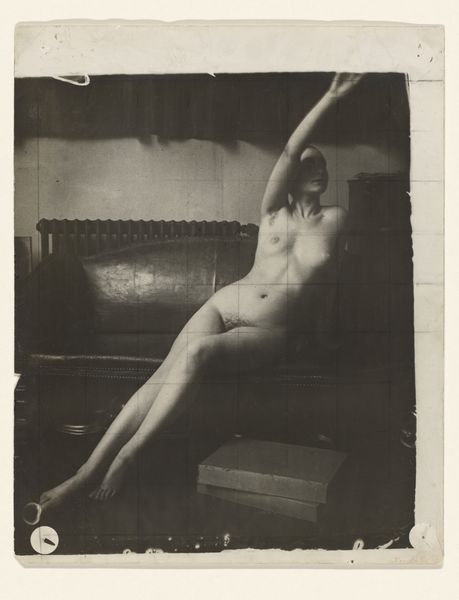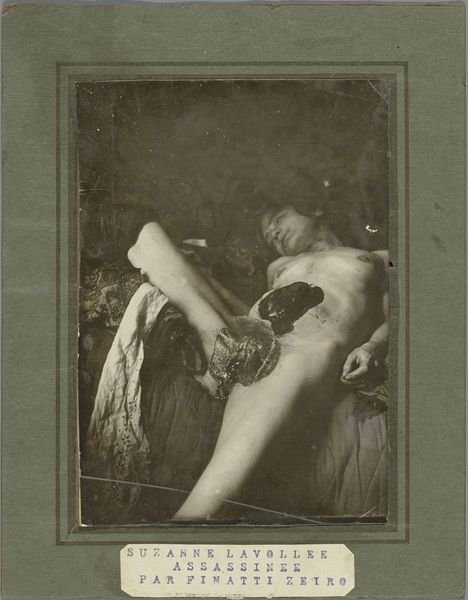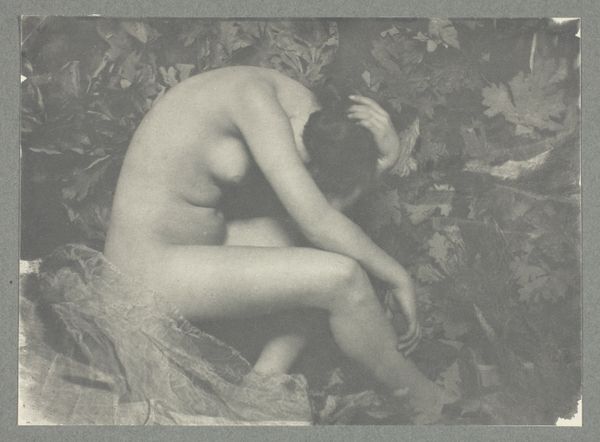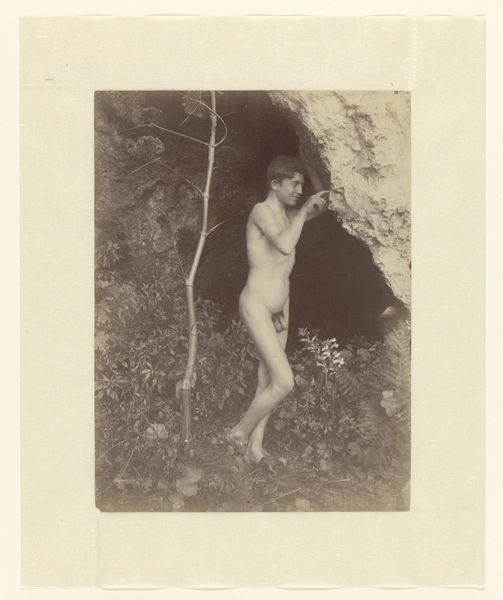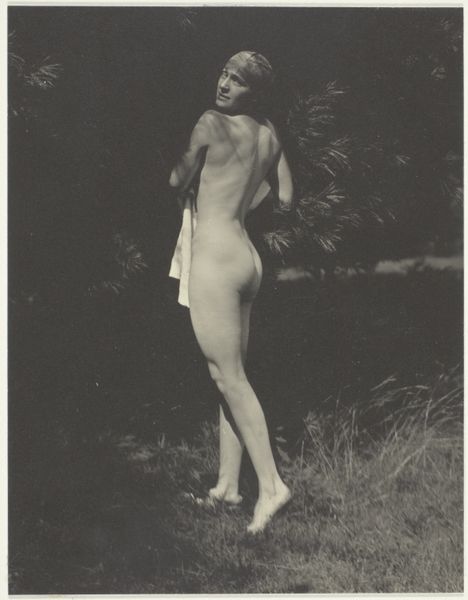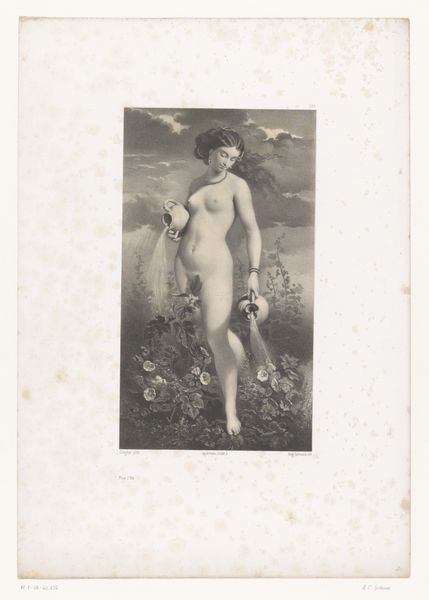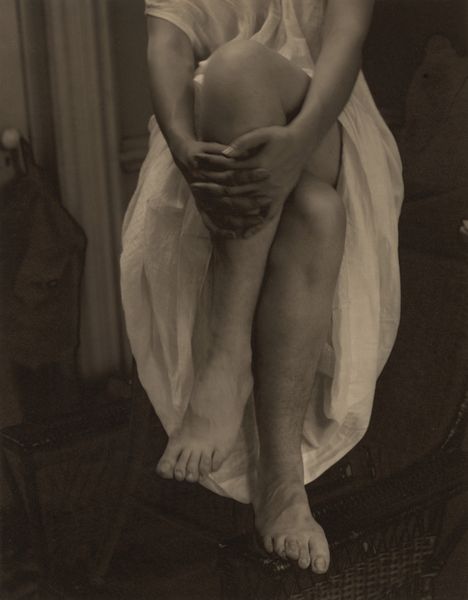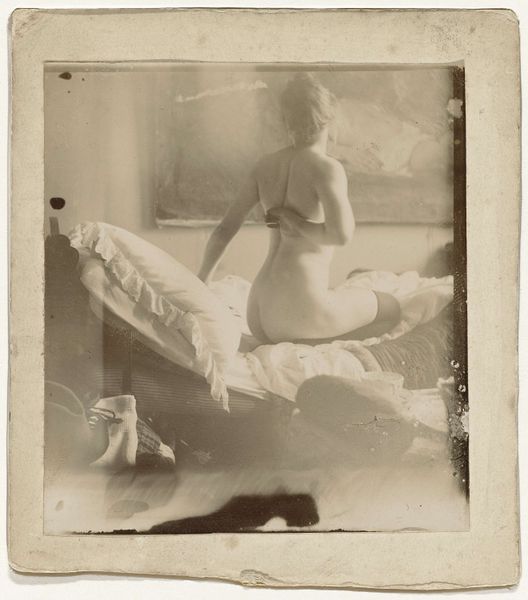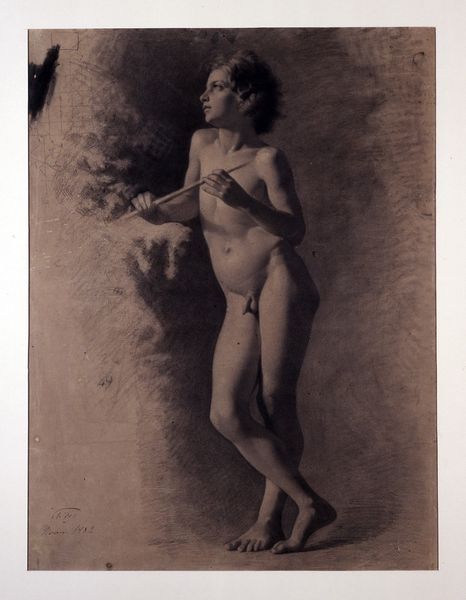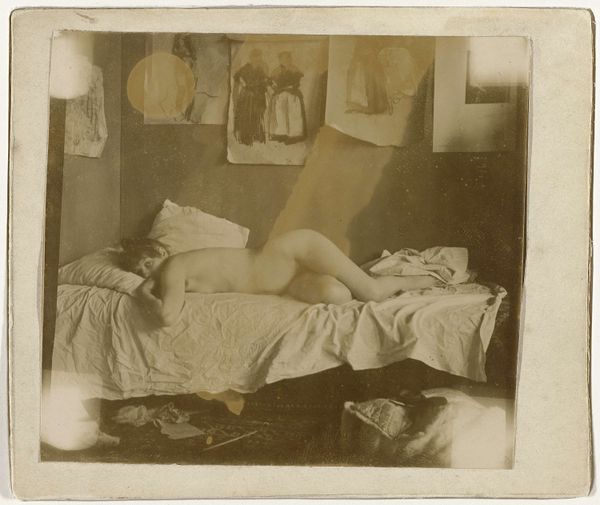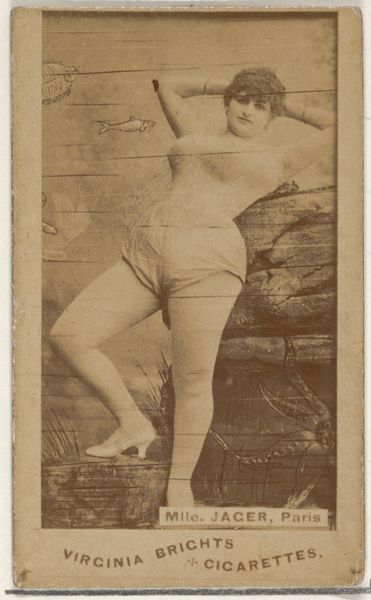
print, photography, gelatin-silver-print
#
portrait
#
print photography
#
studio photography
#
pictorialism
# print
#
photography
#
gelatin-silver-print
#
united-states
#
nude
#
modernism
#
portrait photography
Dimensions: 23.7 × 19.3 cm (image); 25.3 × 20.2 cm (paper); 54.9 × 44.5 cm (hinged mat)
Copyright: Public Domain
Editor: So this gelatin-silver print, "Georgia Engelhard," by Alfred Stieglitz, dating to 1920, strikes me as both intimate and staged. It's a nude in a seemingly rustic setting, yet the pose feels very deliberate. What stands out to you about it? Curator: Immediately, I see the clash of raw material and the stylized pose. Stieglitz presents this body in a rough, wood-framed window. Consider the labour: felling trees, milling the wood, constructing this cabin. And here we have a modernist nude – the wood, the silver in the print; they're all material witnesses to labor and luxury existing in tension. Do you see how that tension alters our understanding of both the figure and its setting? Editor: Yes, that juxtaposition is interesting. The setting reads as authentic, handmade even, while the pose feels very constructed and deliberate, which challenges conventional lines between labor and its image in art. Curator: Exactly. Pictorialism often tried to elevate photography to "high art" by imitating painting techniques. Stieglitz was using material culture— the texture of the wood, the silver—to show how even the seemingly natural is deeply embedded in social and economic processes. Where does nature end and material production begin? Editor: It's almost like he's showing us the raw ingredients, both physical and social, that go into creating an image, isn't it? The wood itself becomes a signifier, pointing to specific social histories. Curator: Precisely! By drawing attention to materials, Stieglitz forces us to think about art not as something ethereal, but as something made, something produced, something consumed. Editor: I'm now looking at this photograph through an entirely different lens – appreciating the historical background to modernism that focuses less on the fine art, and more on material realities! Thank you. Curator: Indeed, a fresh look can broaden how we view an artwork within society.
Comments
No comments
Be the first to comment and join the conversation on the ultimate creative platform.
